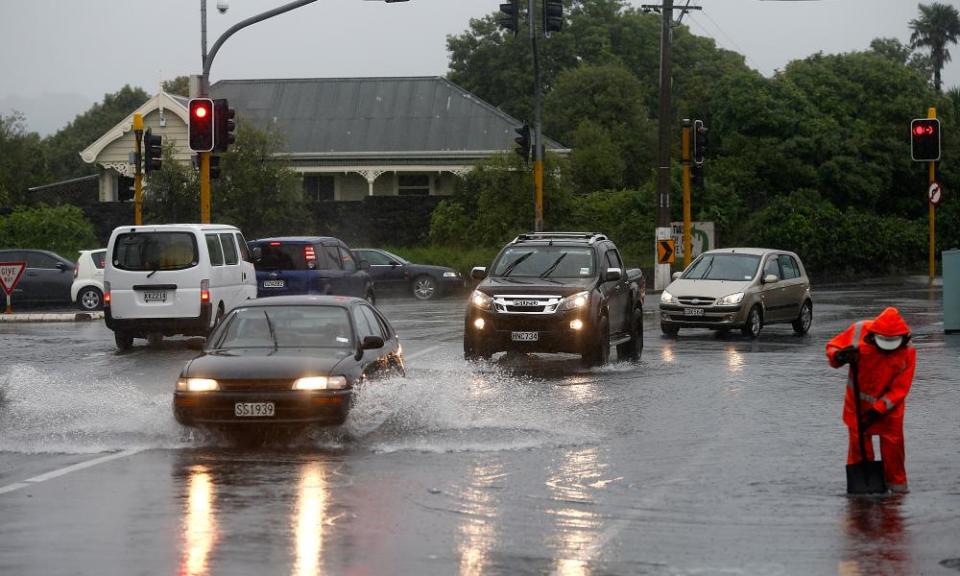Cyclone Cook strikes New Zealand, felling trees and causing power failures

Cyclone Cook has struck New Zealand with power outages, fallen trees and landslides reported around much of the central and eastern North Island, which bore the brunt of the storm.
Cook, which forecasters feared could be the worst storm to strike New Zealand in decades, made landfall just after 6pm local time but by then many coastal villages were abandoned as five-metre swells combined with high tide and smashed against the deserted shoreline.
Although a few rogue spectators braved the elements to gape at the raging surf, most residents seemed to heed civil defence warnings and had moved to higher ground hours before.
Schools and offices closed in Auckland at about lunchtime as civil defence staff urged residents to leave the city immediately and remain at home.
Extra public transport was laid on for the thousands of people escaping the city. By late afternoon, however, the MetService said Cook had just bypassed New Zealand’s largest and most populated city, and the weather warning was dropped.
Further south in the Coromandel and Bay of Plenty regions, power remains out in tens of thousands of homes, and gale-force winds have been reported.
Last week, the tail-end of cyclone Debbie devastated the Bay of Plenty town of Edgecumbe, forcing its 2,000 residents to flee with only a few minutes’ warning.
Although flooding on Thursday was less severe than anticipated, hundreds of trees have fallen, and police said many roads had been closed in the North Island.
Many rural communities on the east coast have prepared to be cut off for up to three days, and have laid in supplies of emergency food and survival gear to wait out the cyclone. Helicopters and emergency teams would set out at first light to check on isolated farms and communities, civil defence said.
States of emergency remain in place in Bay of Plenty and Thames-Coromandel, with the defence force assisting in moving residents to higher ground and keeping people away from the coast.
Our super high-resolution 1.5 km model shows #CycloneCook making landfall just south of Whangamata on Thursday evening. pic.twitter.com/Ro5cw1cZ24
— NIWA Weather (@NiwaWeather) April 12, 2017
In coastal Whakatane, in the badly hit Bay of Plenty, Tautini Hahipene was sheltering at home with his family and had had no power for several hours.
Despite it being “the worst storm” he had experienced, Hahipene said he felt well prepared after days of warnings from forecasters, and after assisting with the rescue of residents from flooded Edgecumbe last week.
“Heard lots of loud cracking just now, that’ll be trees falling,” said Hahipene, via Facebook chat. “The storm is what everyone expected. Our township was empty at 4:30pm today. There will be people afraid of winds plus more possible flooding, but we are up a hill and well protected. We are checking on neighbours with torches and thumbs up.”

In the worst affected areas, hundreds of Kiwis were taking shelter in welfare centres. At the Whakatane Red Cross centre, about 100 people were staying the night, said Lauren Hayes, a communications adviser for the Red Cross.
“People have been arriving here since this afternoon and have all settled in here for the night,” she added. “Earlier on people were having dinner, playing cards and chatting, but now most have settled into bed. The power is still out here but Red Cross has generators set up to provide some light.”
Cook is expected to move over the South Island on Friday and should move offshore by the weekend.


